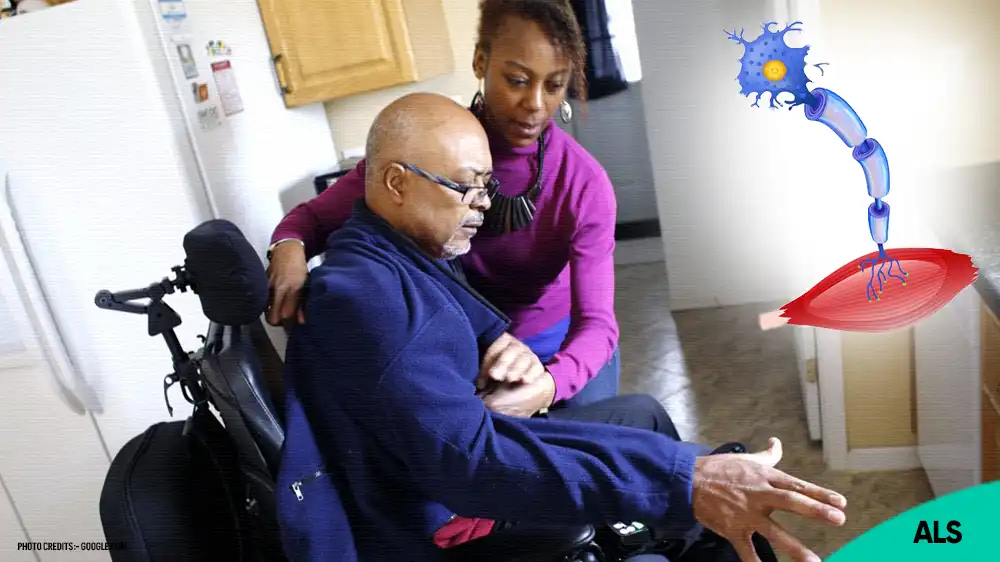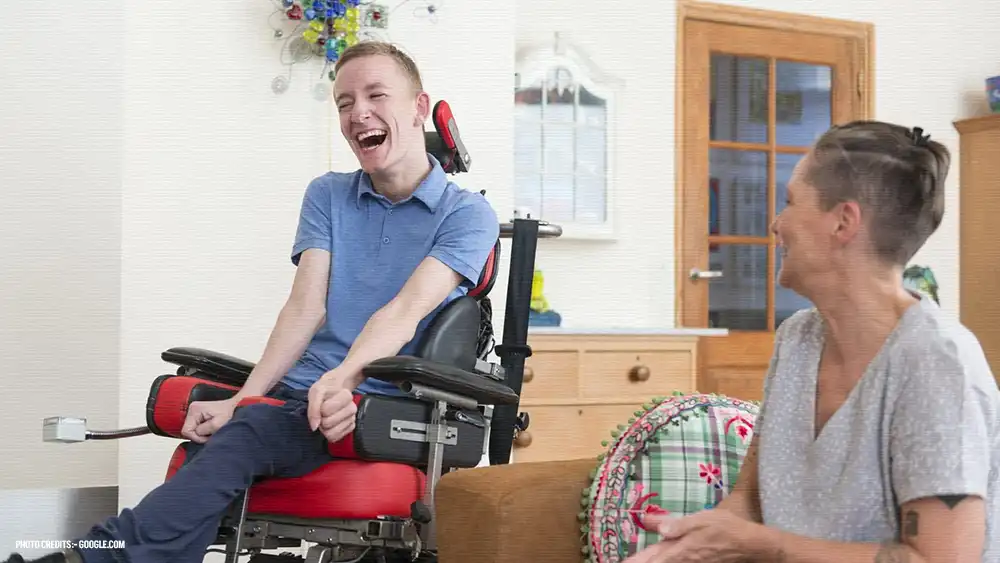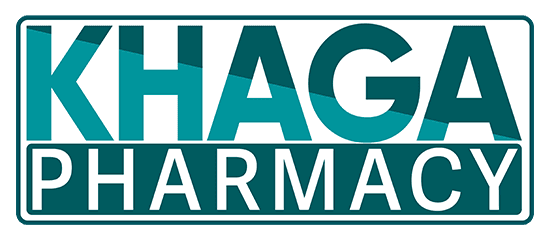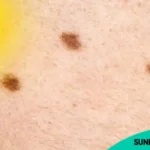NEUROSCIENCE
Amyotrophic Lateral Sclerosis (ALS) Cause, Symptoms and Treatment
-
Rahul Priydarss
Discover comprehensive insights into Amyotrophic Lateral Sclerosis (ALS) with our informative article. Explore the history, causes, symptoms, diagnosis, and treatment options for ALS, providing valuable knowledge for those affected by this progressive neurological disease. Stay informed about the latest research advancements and gain a deeper understanding of ALS to empower yourself and others in the fight against this challenging condition.
Introduction of Amyotrophic Lateral Sclerosis:
Imagine waking up one day, noticing your muscles aren’t as strong as they used to be, and over time, they keep getting weaker. This could be the beginning of a journey with Amyotrophic Lateral Sclerosis (ALS), a condition that affects thousands worldwide. ALS, often known as Lou Gehrig’s disease, is a progressive neurological disease that affects nerve cells in the brain and the spinal cord. In this article, we’ll delve deep into the world of ALS, uncovering its history, causes, symptoms, and much more.
What is Amyotrophic Lateral Sclerosis (ALS):
Amyotrophic Lateral Sclerosis (ALS) is a progressive neurodegenerative disease that affects nerve cells in the brain and spinal cord. It leads to the loss of voluntary muscle control, resulting in muscle weakness, paralysis, and eventually death. There is no known cure, and treatment focuses on symptom management and improving quality of life.

Table of Contents
History of Amyotrophic Lateral Sclerosis:
The history of Amyotrophic Lateral Sclerosis (ALS) dates back to the 19th century.
Early Observations: ALS was first described by French neurologist Jean-Martin Charcot in 1869. Charcot identified the distinct pathology of the disease and coined the term “amyotrophic lateral sclerosis,” which combines Greek words meaning “no muscle nourishment” (amyotrophic), “scarring” (sclerosis), and “lateral” to describe the areas of the spinal cord affected.
Naming and Recognition: In the United States, ALS became widely known as Lou Gehrig’s disease after the famous baseball player Lou Gehrig was diagnosed with it in 1939. Gehrig’s diagnosis brought significant public attention to the condition.
Research and Advances: Throughout the 20th century, research into ALS progressed slowly, hampered by the complexity of the disease and limited technology. In the late 20th and early 21st centuries, advances in genetic research identified several genes associated with familial ALS, including SOD1, TDP-43, and C9orf72. Improved understanding of motor neuron biology and disease mechanisms led to the developing new diagnostic tools and experimental treatments.
Modern Era: The ALS Ice Bucket Challenge in 2014 significantly raised public awareness and funding for ALS research. This viral campaign helped accelerate research efforts and led to discoveries. Ongoing research continues to explore potential therapies, with some drugs, such as riluzole and edaravone, approved to slow disease progression modestly.
Causes of Amyotrophic Lateral Sclerosis:
The causes of Amyotrophic Lateral Sclerosis (ALS) are not fully understood, but the disease is believed to result from a combination of genetic, environmental, and possibly lifestyle factors. Here are the primary causes and contributing factors.
Genetic Factors: About 5-10% of ALS cases are familial (FALS), meaning they are inherited. Mutations in several genes have been linked to ALS, including SOD1, C9orf72, TARDBP, and FUS. These genetic mutations can cause motor neuron degeneration.
Environmental Factors:
- Exposure to Toxins: Some studies suggest that exposure to certain toxins, such as pesticides, heavy metals, and industrial chemicals, might increase the risk of developing ALS.
- Military Service: Veterans, particularly those deployed during the Gulf War, have been found to have a higher incidence of ALS, although the exact reasons are unclear. Potential factors include exposure to environmental toxins, physical trauma, and intense physical exertion.
Age and Gender: ALS is more common in people aged 40-70, and it affects slightly more men than women. However, the reasons for these demographic trends are not fully understood.
Lifestyle Factors: There is some evidence to suggest that factors such as smoking and a history of head trauma may be associated with an increased risk of developing ALS, though more research is needed to establish these links definitively.
Other Biological Factors: Abnormal protein aggregation, mitochondrial dysfunction, and defects in the transport of molecules within neurons are also implicated in the disease process. Inflammation and immune system dysfunction may play a role in the progression of ALS.
Symptoms of Amyotrophic Lateral Sclerosis:
The symptoms of Amyotrophic Lateral Sclerosis (ALS) can vary widely among individuals, but they generally involve progressive muscle weakness and loss of motor function. Here are the key symptoms.
Early Symptoms:
- Muscle weakness often starts in one limb (hand, arm, leg) and gradually spreads to other body parts.
- Muscle twitching (fasciculations) and cramping, particularly in the arms and shoulders.
- Stiffness and spasticity in muscles.
- Slurred speech and difficulty swallowing (dysphagia).
Progressive Symptoms:
- Increased difficulty with fine motor tasks, such as buttoning a shirt or writing.
- Weakness and atrophy in muscles, leading to difficulty walking, climbing stairs, or lifting objects.
- Uncontrollable laughing or crying, known as emotional lability.
- Respiratory problems due to weakened diaphragm and chest muscles, leading to shortness of breath and difficulty breathing.
Advanced Symptoms:
- Severe muscle weakness and paralysis spread to most of the body.
- Difficulty speaking, eventually leading to loss of speech (anarthria).
- Complete dependence on others for daily activities due to extensive muscle paralysis.
- Need for ventilatory support due to respiratory muscle failure.

Diagnosis of Amyotrophic Lateral Sclerosis:
Diagnosing Amyotrophic Lateral Sclerosis (ALS) involves a comprehensive evaluation to rule out other conditions with similar symptoms and to confirm the presence of characteristic signs of ALS. Here’s an overview of the diagnostic process.
Clinical Evaluation: A thorough medical history and physical examination are conducted to assess symptoms, their progression, and any potential risk factors. The neurologist examines muscle strength, tone, reflexes, coordination, and signs of muscle atrophy.
Electrodiagnostic Tests: Electromyography (EMG) and nerve conduction studies (NCS) are crucial diagnostic tests for ALS. EMG measures electrical activity in muscles, helping to identify signs of denervation and muscle weakness. NCS evaluates the function of peripheral nerves and can detect abnormalities in nerve conduction.
Imaging Studies: Magnetic Resonance Imaging (MRI) of the brain and spinal cord may be performed to rule out other conditions that mimic ALS, such as spinal cord tumors or multiple sclerosis. MRI can also help visualize changes in the motor cortex and spinal cord associated with ALS.
Laboratory Tests: Blood tests are typically performed to rule out other conditions that can cause similar symptoms, such as thyroid disorders, vitamin deficiencies, or autoimmune diseases.
Clinical Criteria: The revised El Escorial criteria or the Awaji-Shima criteria are often used to classify the level of diagnostic certainty based on the pattern of weakness and involvement of upper and lower motor neurons.
Genetic Testing: In cases of familial ALS or when there is a strong family history, genetic testing may be recommended to identify mutations in known ALS-associated genes.
Multidisciplinary Assessment: Given the complex nature of ALS, a multidisciplinary team, including neurologists, pulmonologists, physical therapists, occupational therapists, speech-language pathologists, and nutritionists, is often involved in the diagnostic process to assess various aspects of the disease and provide comprehensive care.
Treatment Options for Amyotrophic Lateral Sclerosis:
Treatment for Amyotrophic Lateral Sclerosis (ALS) focuses on managing symptoms, improving quality of life, and providing supportive care. While there is currently no cure for ALS, various treatments and interventions can help alleviate symptoms and slow disease progression. Here are the main treatment options.
Medications:
- Riluzole: Riluzole is the first FDA-approved medication for ALS. It works by reducing glutamate levels in the brain, which may help slow disease progression and prolong survival.
- Edaravone: Edaravone is another FDA-approved medication for ALS. It is an antioxidant that may help reduce oxidative stress in nerve cells and slow functional decline, particularly in early-stage ALS.
Symptom Management:
- Muscle Spasticity: Medications such as baclofen or tizanidine may be prescribed to help reduce muscle spasticity and stiffness.
- Pain Management: Pain associated with muscle cramps or spasticity can be managed with analgesic medications or physical therapy.
- Saliva Control: Medications or procedures may be recommended to help manage excessive saliva production (sialorrhea) or difficulty swallowing caused by saliva buildup.
Respiratory Support: As ALS progresses, respiratory muscles weaken, leading to breathing difficulties. Non-invasive ventilation (NIV) or bilevel-positive airway pressure (BiPAP) machines may be used to assist with breathing and improve oxygenation. In advanced stages, invasive ventilation via a tracheostomy may be necessary for long-term respiratory support.
Nutritional Support: Maintaining adequate nutrition is important for individuals with ALS. A registered dietitian can provide dietary recommendations and may suggest strategies such as modified texture diets or use of feeding tubes to ensure sufficient calorie intake.
Physical and Occupational Therapy: Physical therapists can design exercise programs to help maintain muscle strength, mobility, and flexibility. Occupational therapists can suggest adaptive equipment and techniques to facilitate daily activities and improve independence.
Speech Therapy: Speech-language pathologists can assess and address speech and swallowing difficulties, providing strategies to improve communication and prevent aspiration during eating and drinking.
Psychological and Social Support: ALS can have a profound emotional and social impact on individuals and their families. Counseling, support groups, and palliative care services can provide emotional support, guidance, and resources throughout the disease course.
Research for Amyotrophic Lateral Sclerosis:
Research for Amyotrophic Lateral Sclerosis (ALS) is ongoing worldwide, focusing on various aspects of the disease, including its causes, mechanisms, treatment options, and potential cures. Here are some key areas of ALS research.
Disease Mechanisms: Investigating the underlying mechanisms of ALS, including the role of genetic mutations, protein aggregation, mitochondrial dysfunction, inflammation, and impaired axonal transport. Studying the interactions between motor neurons and supporting cells, such as astrocytes and microglia, to understand how these interactions contribute to motor neuron degeneration.
Genetics: Identifying new ALS-associated genes and genetic risk factors through genome-wide association studies (GWAS) and whole-genome sequencing. Studying the molecular pathways affected by ALS-related gene mutations to develop targeted therapies.
Biomarkers: Discovering and validating biomarkers for ALS that can aid in diagnosis, monitoring disease progression, and assessing treatment response. Biomarkers may include genetic markers, biochemical markers in blood or cerebrospinal fluid, and neuroimaging markers.
Drug Discovery and Development: Screening compounds and molecules for their potential to modulate disease pathways, reduce neuroinflammation, enhance neuroprotection, or promote motor neuron survival. Developing new therapeutic approaches, including gene therapy, RNA-targeted therapies (such as antisense oligonucleotides), and stem cell-based therapies.
Clinical Trials: Conducting clinical trials to evaluate the safety and efficacy of new treatments for ALS, including investigational drugs, biologics, and therapeutic interventions. Collaborative efforts such as the ALS Therapy Development Institute (ALS TDI), ALS Association’s Neuro Collaborative, and international ALS clinical trial networks facilitate the design and implementation of clinical trials.
Patient Care and Support: Improving multidisciplinary care approaches and supportive interventions to address the diverse needs of ALS patients, including symptom management, respiratory support, nutritional support, and psychosocial care. Enhancing palliative care services to optimize quality of life and provide end-of-life support for individuals with ALS and their families.
Big Data and Precision Medicine: Utilizing large-scale data analytics, machine learning, and precision medicine approaches to analyse clinical and genetic data from ALS patients, identify disease subtypes, predict disease progression, and tailor personalized treatment strategies.
FAQs about Amyotrophic Lateral Sclerosis:
A1: ALS, or Amyotrophic Lateral Sclerosis, is a progressive neurodegenerative disease affecting nerve cells in the brain and spinal cord, leading to muscle weakness, paralysis, and eventual death.
A2: Diagnosis involves a comprehensive evaluation, including medical history, physical examination, electrodiagnostic tests like EMG, imaging studies like MRI, and sometimes genetic testing. A multidisciplinary team assesses various aspects of the disease.
A3: The exact cause is unclear, but ALS is believed to result from a combination of genetic, environmental, and possibly lifestyle factors. Genetic mutations, toxin exposure, military service, age, gender, and lifestyle may contribute to ALS risk.
A4: Symptoms include muscle weakness, twitching, cramping, difficulty with fine motor tasks, slurred speech, swallowing difficulties, emotional changes, respiratory problems, and eventual paralysis.
A5: While there’s no cure, treatments focus on managing symptoms and improving quality of life. Medications like Riluzole and Edaravone may slow disease progression. Other options include symptom management, respiratory support, nutritional support, therapy, and psychosocial care. Ongoing research aims to develop new therapies and interventions.
-Please remember, to always consult with healthcare professionals or Doctors for personalized advice related to medical conditions.
Conclusion:
Amyotrophic Lateral Sclerosis (ALS) presents a complex challenge, affecting thousands worldwide. Through our exploration of its history, causes, symptoms, diagnosis, and treatment options, we’ve shed light on this progressive neurological disease. Despite its formidable nature, ongoing research offers hope for improved management and potential breakthroughs in the fight against ALS. Together, let’s continue to raise awareness, support those affected, and advance our understanding to make strides toward a brighter future.












My husband had ALS/MND programme about 4 months ago. he no longer requires a feeding tube, sleeps soundly, works out frequently, and is now very active. It doesn’t make the ALS go away but it did give him better quality of life. we got the treatment from vinehealthcentre. com
Good.